Otherwise, an indicator may be added which has an "endpoint" (changes color) at the equivalence point, or the equivalence point may be determined from a titration curve. Applications. Distilled water H solubility of KHT (s). [0003] The emergence of novel RNA viruses as vectors of life-threatening pandemics underlines the urgency for the rapid development of vaccines against these pathogens. Place the beaker on a magnetic stir plate and add a stir bar. In this study, alkaline hydrogen peroxide (AHP) treatments were conducted over time (0.5, 1, 3, and 5 h) at 12.6% (w/v) SCF and the effects on the physicochemical and . Potassium acid phthalate, KNaC8H4O4, or KHP, is used in many laboratories, including general chemistry laboratories, to standardize solutions of base. 3: Using Chemical Equations in Calculations, { "3.01:_Prelude_to_Chemical_Equations" : "property get [Map MindTouch.Deki.Logic.ExtensionProcessorQueryProvider+<>c__DisplayClass228_0.b__1]()", "3.02:_Equations_and_Mass_Relationships" : "property get [Map MindTouch.Deki.Logic.ExtensionProcessorQueryProvider+<>c__DisplayClass228_0.b__1]()", "3.03:_The_Limiting_Reagent" : "property get [Map MindTouch.Deki.Logic.ExtensionProcessorQueryProvider+<>c__DisplayClass228_0.b__1]()", "3.04:_Percent_Yield" : "property get [Map MindTouch.Deki.Logic.ExtensionProcessorQueryProvider+<>c__DisplayClass228_0.b__1]()", "3.05:_Analysis_of_Compounds" : "property get [Map MindTouch.Deki.Logic.ExtensionProcessorQueryProvider+<>c__DisplayClass228_0.b__1]()", "3.06:_Thermochemistry" : "property get [Map MindTouch.Deki.Logic.ExtensionProcessorQueryProvider+<>c__DisplayClass228_0.b__1]()", "3.07:_Energy" : "property get [Map MindTouch.Deki.Logic.ExtensionProcessorQueryProvider+<>c__DisplayClass228_0.b__1]()", "3.08:_Thermochemical_Equations" : "property get [Map MindTouch.Deki.Logic.ExtensionProcessorQueryProvider+<>c__DisplayClass228_0.b__1]()", "3.09:_Hess\'_Law" : "property get [Map MindTouch.Deki.Logic.ExtensionProcessorQueryProvider+<>c__DisplayClass228_0.b__1]()", "3.10:_Standard_Enthalpies_of_Formation" : "property get [Map MindTouch.Deki.Logic.ExtensionProcessorQueryProvider+<>c__DisplayClass228_0.b__1]()", "3.11:_Solution_Concentrations" : "property get [Map MindTouch.Deki.Logic.ExtensionProcessorQueryProvider+<>c__DisplayClass228_0.b__1]()", "3.12:_Diluting_and_Mixing_Solutions" : "property get [Map MindTouch.Deki.Logic.ExtensionProcessorQueryProvider+<>c__DisplayClass228_0.b__1]()", "3.13:_Titrations" : "property get [Map MindTouch.Deki.Logic.ExtensionProcessorQueryProvider+<>c__DisplayClass228_0.b__1]()" }, { "00:_Front_Matter" : "property get [Map MindTouch.Deki.Logic.ExtensionProcessorQueryProvider+<>c__DisplayClass228_0.b__1]()", "01:_Introduction_-_The_Ambit_of_Chemistry" : "property get [Map MindTouch.Deki.Logic.ExtensionProcessorQueryProvider+<>c__DisplayClass228_0.b__1]()", "02:_Atoms_Molecules_and_Chemical_Reactions" : "property get [Map MindTouch.Deki.Logic.ExtensionProcessorQueryProvider+<>c__DisplayClass228_0.b__1]()", "03:_Using_Chemical_Equations_in_Calculations" : "property get [Map MindTouch.Deki.Logic.ExtensionProcessorQueryProvider+<>c__DisplayClass228_0.b__1]()", "04:_The_Structure_of_Atoms" : "property get [Map MindTouch.Deki.Logic.ExtensionProcessorQueryProvider+<>c__DisplayClass228_0.b__1]()", "05:_The_Electronic_Structure_of_Atoms" : "property get [Map MindTouch.Deki.Logic.ExtensionProcessorQueryProvider+<>c__DisplayClass228_0.b__1]()", "06:_Chemical_Bonding_-_Electron_Pairs_and_Octets" : "property get [Map MindTouch.Deki.Logic.ExtensionProcessorQueryProvider+<>c__DisplayClass228_0.b__1]()", "07:_Further_Aspects_of_Covalent_Bonding" : "property get [Map MindTouch.Deki.Logic.ExtensionProcessorQueryProvider+<>c__DisplayClass228_0.b__1]()", "08:_Properties_of_Organic_Compounds" : "property get [Map MindTouch.Deki.Logic.ExtensionProcessorQueryProvider+<>c__DisplayClass228_0.b__1]()", "09:_Gases" : "property get [Map MindTouch.Deki.Logic.ExtensionProcessorQueryProvider+<>c__DisplayClass228_0.b__1]()", "10:_Solids_Liquids_and_Solutions" : "property get [Map MindTouch.Deki.Logic.ExtensionProcessorQueryProvider+<>c__DisplayClass228_0.b__1]()", "11:_Reactions_in_Aqueous_Solutions" : "property get [Map MindTouch.Deki.Logic.ExtensionProcessorQueryProvider+<>c__DisplayClass228_0.b__1]()", "12:_Chemistry_of_the_Representative_Elements" : "property get [Map MindTouch.Deki.Logic.ExtensionProcessorQueryProvider+<>c__DisplayClass228_0.b__1]()", "13:_Chemical_Equilibrium" : "property get [Map MindTouch.Deki.Logic.ExtensionProcessorQueryProvider+<>c__DisplayClass228_0.b__1]()", "14:_Ionic_Equilibria_in_Aqueous_Solutions" : "property get [Map MindTouch.Deki.Logic.ExtensionProcessorQueryProvider+<>c__DisplayClass228_0.b__1]()", "15:_Thermodynamics-_Atoms_Molecules_and_Energy" : "property get [Map MindTouch.Deki.Logic.ExtensionProcessorQueryProvider+<>c__DisplayClass228_0.b__1]()", "16:_Entropy_and_Spontaneous_Reactions" : "property get [Map MindTouch.Deki.Logic.ExtensionProcessorQueryProvider+<>c__DisplayClass228_0.b__1]()", "17:_Electrochemical_Cells" : "property get [Map MindTouch.Deki.Logic.ExtensionProcessorQueryProvider+<>c__DisplayClass228_0.b__1]()", "18:_Chemical_Kinetics" : "property get [Map MindTouch.Deki.Logic.ExtensionProcessorQueryProvider+<>c__DisplayClass228_0.b__1]()", "19:_Nuclear_Chemistry" : "property get [Map MindTouch.Deki.Logic.ExtensionProcessorQueryProvider+<>c__DisplayClass228_0.b__1]()", "20:_Molecules_in_Living_Systems" : "property get [Map MindTouch.Deki.Logic.ExtensionProcessorQueryProvider+<>c__DisplayClass228_0.b__1]()", "21:_Spectra_and_Structure_of_Atoms_and_Molecules" : "property get [Map MindTouch.Deki.Logic.ExtensionProcessorQueryProvider+<>c__DisplayClass228_0.b__1]()", "22:_Metals" : "property get [Map MindTouch.Deki.Logic.ExtensionProcessorQueryProvider+<>c__DisplayClass228_0.b__1]()", "zz:_Back_Matter" : "property get [Map MindTouch.Deki.Logic.ExtensionProcessorQueryProvider+<>c__DisplayClass228_0.b__1]()" }, [ "article:topic", "Titration", "Endpoint", "equivalence point", "indicator", "titrant", "authorname:chemprime", "showtoc:no", "license:ccbyncsa", "licenseversion:40" ], https://chem.libretexts.org/@app/auth/3/login?returnto=https%3A%2F%2Fchem.libretexts.org%2FBookshelves%2FGeneral_Chemistry%2FBook%253A_ChemPRIME_(Moore_et_al. The Ksp of The reaction which occurs is, \[ \text{C} \text{H}_{3} \text{COOH} (aq) + \text{ NaOH} (aq) \rightarrow \text{ Na}^{+} (aq) + \text{CH}_{3} \text{COO}^{-} (aq) + \text{H}_{2} \text{O} (l) \label{2} \]. Then filter exactly 50 mL of the solution into the
Basically, #1# molecule of #KHP# only donates #1# #H^+# ion. (120 g, 0.416 mol), potassium carbonate (115 g, 0.832 mol) and DMSO (1.2 L . endobj
After the titration has reached the endpoint, a final volume is read from the buret. molecule are acidic and exchangeable in acid-base reactions. Drugs that Theory: 5 mL of the filtered solution was pipetted into a clean 50 mL Erlenmeyer flask. H C 4 H 4 O 6 . Now, what will happen if we add some KCl to the saturated solution? #KHP# being "monoprotic" means that one mole of #KHP# is one equivalent. Find out latest Payment Gateway Solution tenders in Chhattisgarh. The added indicator changes to pink when the titration is complete, indicating that all of the aqueous acetic acid has been consumed by NaOH(aq). . ZJ-ZC
h#mZUeX2V9ehZVZhZ6@Vvi
H2 iH:$IQ:j,-. Prepare buller by direcl addilion Conside hoir best t0 prcpatc aboun hctc_ litcr ofa buffer solution with pH 7.75 usinz ofthe Kicz acid conjugatc basc systems {Vezk Acid Conjugate Base HC,04 C,0 ? Calculate the percentage error of the molar solubility of KHT in 0 M KCl: For each row, the temperature is the average . Add about 4 drops of indicator. The filtration and titration procedures were the same as for flask A. KH C 4 H 4 O 6 ( s ) . <>
some of the added K+ ions. common ion will change the equilibrium as predicted by le Chtelier's principle. as KHT in order to simplify the equation. 4 0 obj
Buffer pKa and pH Range Values For preparation of . Its solubility
Fold a filter paper into halves, then into quarters. After 15 minutes of swirling, some solution was How do you calculate the ideal gas law constant? Basically, #1# molecule of #KHP#only donates #1# #H^+# ion. After calculating the solubility of KHTar for the three solvent systems along with Ksp. The Ksp of the salt in water was determined to be 8 1 0 4. Prelab: In addition to writing your procedure, write . since it is a monoprotic weak acid. The Ksp for a sparingly soluble salt is determined by measuring the First, we need to find the number of moles of #NaOH#: #KHP# being "monoprotic" means that one mole of #KHP#is one equivalent. the cylinder and thrown away. <>/ExtGState<>/ProcSet[/PDF/Text/ImageB/ImageC/ImageI] >>/MediaBox[ 0 0 612 792] /Contents 4 0 R/Group<>/Tabs/S/StructParents 0>>
Solubility Product of Potassium Hydrogen Tartrate, Experiments in General Chemistry, 4th ed. 0 M KNO3 (1) 0 M KNO3 (2) DI H20 (1) DI H20 (2) 0 M The titration process can be observed in the video below. I. HTar- (aq) H+ (aq) + Tar2- (aq) ; The McGraw Hill Companies. (2 pts) If the concentration of bromide ion in a saturated solution in equilibrium with PbBr2 solid is determined to be 0.0125 M, what is the solubility of PbBr2 in terms of . 3 125-mL Erlenmeyer flasks (washed and rinsed with and distilled water) b. Potassium hydrogen tartrate, KHCHO, is a slightly soluble salt isolated . If enough KOH is added to a solution of tartaric acid to neutralize only half the acidic hydrogens, the salt, KHC4H4O6 (or KHTar) is obtained as a slightly soluble salt. Using the initial and final reading, the volume added can be determined quite precisely: The object of a titration is always to add just the amount of titrant needed to consume exactly the amount of substance being titrated. These values were determined using titrations to find the molar solubility. Ksp of KHTar: 1 10 -3 7 10 -4 6 10 - 430 1 0 3. In this back titration experiment, Potassium Hydrogen Phthalate was used as the primary standard. added to a solution of tartaric acid to neutralize only half the acidic hydrogens, the salt, From the measured solubilities in each of these solutions, calculate the Ksp for dissolves. . (g#Xg1u2xtGP(geSE7yL64do-CB &0AW1t=]}>
'z9_=W !.Z0 5$7} G)( j!76
!09=? Potassium hydrogen tartrate (cream of tartar), KHC4H4O6, is a weak acid, that is not very soluble in water. Study Resources. and titration procedures were the same as for flask A. Use substitution, Gaussian elimination, or a calculator to solve for each variable. Sodium hydrogentartrate is an inorganic salt commonly used in qualitative chemical analysis to detect potassium. The Ksp of KHTar in these solvents is given by: Ksp= [K+][HTar-] In pure water the only sources of potassium and acid tartrate ions are . Ksp Determination of Potassium Hydrogen Tartrate by Titration Calculations Titration. Solution B Simply add some NaCl (which has no ions in common
Applications of Solubility product , ionic product , common ion effect. endobj
the tartrate salt in both water and in a 0 M KCl solution. The solubility of potassium hydrogen tartrate (KHT, 188.18g/mol) is 1.0g/162mL at 25 C and 1.0g/16mL at 100 C. KHT (s) HT - (aq) KHC4H4O6 (s) HC4H4O6 + - (aq) K + (aq) + K + (aq) Objective : Determine the solubility and solubility product constant by titration. as we extrapolate back to 0 concentration does the
After the solution was done stirring, the Calculate the number of moles of Potassium Hydrogen Tartrate (KHT) salt used in each titration: Gather: a. Potassium hydrogen tartrate (cream of tartar), KHC4H4O6,
activity equal the concentration. Each person in each lab group will prepare a saturated solution of KHT in pure water
This reading can usually be estimated to the nearest hundredth of a milliliter, so precise additions of titrant can be made rapidly. (aq): so that the [K+ (aq)]total = [HT-] + [KCl]. The HC 4 H 4 O 6 - (aq) ion contains one acidic hydrogen, so that the quantity of potassium hydrogen tartrate in solution can be determined by . Solubility Product of Potassium sets of data from which you can calculate the molar concentration of KHT. This means Real_(Non-Ideal)_Systems/Salting_Out (accessed Apr 24, 2020). Maps/Supplemental_Modules_(Physical_and_Theoretical_Chemistry)/Thermodynamics/ The tablets are stamped out by machines, not weighed individually, and so some variation is expected. From these equations we can see that there will be a one to one relationship between
hb```Tv!b`0p rm}`qL+| 000{0,dh```` 8(= F^A}K(`1({Aqj7
P10lc`a_28 cB/
KHC4H4O6 + NaOH + CaCl2 = CaC4H4O6 + KCl + NaCl + H2O, Na2HAsO4 + Zn + HCl = ZnCl2 + H2O + NaCl + AsCl3. (aq) Tar2- (aq) + H 2 O Thus we can analyze a solution for HTar- by titration with a standard strong base solution such as aqueous NaOH. If Then, we need to find the volume of the #NaOH# solution. The endpoint appears suddenly, and care must be taken not to overshoot the endpoint. Vi (mL) Calculate the [HT-] from your titration data
a clean funnel, and a 100 mL beaker was set aside. f. Titrate the two samples to the pale pink phenolphthalein endpoint, recording the initial The Ksp of the salt in water After calculating the solubility of KHTar for the three solvent systems along with Ksp. New York, 2020, pp. Thus we can analyze a solution for HTar- by titration with a standard strong base H C 4 H 4 O 6 , In order to compare the effect of the common ion, the molar solubility is determined of NaOH . drop. In many cases it is not a simple matter to obtain a pure substance, weigh it accurately, and dissolve it in a volumetric flask as was done in Example 1 of Solution Concentrations. proceeds to completion: chem.libretexts/Bookshelves/Physical_and_Theoretical_Chemistry_Textbook_ You are here: police scanner franklin / ihg human resources contact number / tartaric acid pka That is, at the equivalence point the ratio of the amount of NaOH, added to the amount of CH3COOH consumed must equal the stoichiometric ratio, \[\dfrac{n_{\text{NaOH}}\text{(added from graduated cylinder)}}{n_{\text{CH}_{\text{3}}{\text{COOH}}}\text{(initially in flask)}}=\text{S}( \dfrac{\text{NaOH}}{\text{CH}_{\text{3}}\text{COOH}} ) \nonumber \], \[=\dfrac{\text{1 mol NaOH}}{\text{1 mol CH}_{\text{3}}\text{COOH}} \nonumber \], What volume of 0.05386 M KMnO4 would be needed to reach the endpoint when titrating 25.00 ml of 0.1272 M H2O2, given S(KMnO4/H2O2) = 2/5. This is the formula for molarity: #"molarity of NaOH" = "number of moles of NaOH"/"volume of NaOH solution (L)"# First, we need to find the number of moles of #NaOH#:. Log in Join. The LibreTexts libraries arePowered by NICE CXone Expertand are supported by the Department of Education Open Textbook Pilot Project, the UC Davis Office of the Provost, the UC Davis Library, the California State University Affordable Learning Solutions Program, and Merlot. To obtain VKMnO4(aq) we use the concentration as a conversion factor: \[V_{\text{KMnO}_{\text{4}}\text{(}aq\text{)}}=\text{1}\text{.272 mmol KMnO}_{\text{4}}\times \dfrac{\text{1 cm}^{\text{3}}}{\text{5}\text{.386}\times \text{10}^{\text{-2}}\text{ mmol KMnO}_{\text{4}}} \nonumber \]. This is because the positive ends of water molecules (the H
13. 2 0 obj
; The McGraw Hill g. Treat the other two filtered KHTar solutions in a similar way. Trial 3: 2 1 0 3 mol of NaOH moles in a solution that has a high ionic strength. water, one obtains potassium and hydrogen tartrate ions: for only $11.00 $9.35/page. (2 pts) Write the net ionic equation for the reaction that occurs when potassium hydrogen tartrate (represent tartrate as HT) is titrated with sodium hydroxide solution. 1. Aim: The purpose of this experiment is to determine the concentration of a solution of Sodium hydroxide by titration against a standard solution of Potassium hydrogenphtalate. %
<>
Common ingredients of all biuret reagents are A. sodium potassium tartrate and NaOH B. sodium tungstate and sulfuric acid C. copper sulfate and sulfuric acid D. copper sulfate and . endobj
soluble ionic salt. proceeded to carry out the experiment for flask A. Eventually, all the acetic acid is consumed. A process according to any preceding claim which comprises converting said compound of formula [I] into the L-tartrate salt. CHM 212 Experiment 1: Standardization1 of a 0.1M sodium . The equation is, \[ \text{C}_{6} \text{H}_{8} \text{O}_{6} (aq) + \text{NaOH} (aq) \rightarrow \text{ Na C}_{6} \text{H}_{7} \text{O}_{6} (aq) + \text{H}_{2} \text{O} (l) \nonumber \]. by the law of mass action as follows: After 20.00 mL NaOH solution has been added, the titration mixture has a pH of 5.75. The first part of this experiment aims to determine the solubility product constant of potassium hydrogen tartrate in water, and thereby determine how the enthalpy and entropy change of the dissolutio . Best Answer. endstream
endobj
544 0 obj
<>/Metadata 28 0 R/Pages 541 0 R/StructTreeRoot 37 0 R/Type/Catalog>>
endobj
545 0 obj
<>/MediaBox[0 0 612 792]/Parent 541 0 R/Resources<>/ProcSet[/PDF/Text/ImageB/ImageC/ImageI]>>/Rotate 0/StructParents 0/Tabs/S/Type/Page>>
endobj
546 0 obj
<>stream
At the equivalence point, the stoichiometric ratio will apply, and we can use it to calculate the amount of KMnO4 which must be added: \[n_{\text{KMnO}_{\text{4}}}\text{(added)}=n_{\text{H}_{\text{2}}\text{O}_{\text{2}}}\text{(in flask)}\times \text{S}\left( \dfrac{\text{KMnO}_{\text{4}}}{\text{H}_{\text{2}}\text{O}_{\text{2}}} \right) \nonumber \]. tartrate. In order for an ion to dissolve in water it must cause some ordering or structure in
In other words, #1# mole of #NaOH# will neutralise #1#mole of #KHP#. . First, I'll assume that KHP is potassium hydrogen phthalate and not potassium hydrogen phosphate. Solubility Product of Potassium Hydrogen Tartrate for potassium bitartrate uses titration to determine the tartrate content.2 In response to the modernization initiative, we propose a selective and sensitive IC method to replace the titrimetric assay for potassium bitartrate. Instructor Test Bank, Chapter 4 - Summary Give Me Liberty! Copyright 2023 StudeerSnel B.V., Keizersgracht 424, 1016 GC Amsterdam, KVK: 56829787, BTW: NL852321363B01, In this laboratory exercise, the Ksp, solubility product constant, of, potassium tartrate salt, is determined. The number of atoms of each element on both sides of KHC4H4O6 + NaOH = NaKC4H4O6 + H2O are already equal which means that the equation is already balanced and no additional work is needed. Use the calculator below to balance chemical equations and determine the type of reaction (instructions). In recent years, many studies have focused on the application of agronomical techniques to reduce the negative impact of heat waves on secondary metabolites such as phenols. 581 0 obj
<>stream
The acidic nature of the SCBs coincides with the determined pH PZC of 4.17 to 5.52, implying that SCBs would have a . The moles of HTar- are equal to the moles of NaOH used to reach the endpoint: Therefore the concentration of the HTar- anion is given by: The concentration of potassium ion is given by: The addition of potassium ions from potassium nitrate will shift the quilibrium. Titration is often used to determine the concentration of a solution. It also utilizes skills in titration in order to experimentally examine the effect of The greater the amount of ions present in the water,
This is because we have used concentrations to
method errors that could have occured. Question: (PL1) Using the solubility given in the lab, calculate the solubility, in M, of potassium hydrogen tartrate at 25C and at 100C. One flask should be labeled " WATER " and the other " KNO 3 " 3.13: Titrations. Precaution: 1. 808 certified writers online. different solvent systems: pure water, 0 M KNO3, and 0 M NaNO3, I could Trial 1: 2 1 0 3 mol of NaOH Titration of a Saturated Potassium Hydrogen Tartrate (KHT) Solution Against Standardized NaOH Preparation of the Saturated KHT Solution for Titration 1. Trial 3: 2 1 0 3 mol of KHT For example, there were To balance a chemical equation, enter an equation of a chemical reaction and press the Balance button. endstream
endobj
startxref
The expression of the Ksp is written as: This experiment utilizes the Le Chateliers Principle in order to investigate the solubility buret and measure the initial volume. The NaOH solution is then titrated into the tartrate salt solution by High temperatures and the anomalous distribution of rainfall during the growing season may have a negative impact on grapevine yield and berry composition. Determine the molar solubility of the salt in each titration: of NaOH used in this experiment is not high, sodium
The color would shift drastically so we needed to measure exactly how many drops were put into the solutions. A titration is a volumetric technique in which a solution of one reactant (the titrant) is added to a solution of a second reactant (the "analyte") until the equivalence point is reached. We need to find a value of helpless P. Tabulate the data for the entire class. A measured volume of the solution to be titrated, in this case, colorless aqueous acetic acid, CH3COOH(aq) is placed in a beaker. Since soap is sodium salt of a high fatty acid. Calculations: Solution A Calculate the number of moles of NaOH used in each titration: Trial 1: Mass of NaOH = 3 10 3 1.543=5 10 3. And because #"KHP"# here acts as a mono-acidthis is the molar quantity of #NaOH#which were delivered in a volume of #25.49*mL#. the salt in 0 M KCl was determined to be 430 1 0 3. K = Ksp = [M+][A-] By knowing the masses of KHP, we can determine the number of moles used in the titration: At the equivalence point, then: moles NaOH = moles KHP Thus, the molarity of the NaOH solution is determined via the volume of the base used in the titration: Procedure: Part 1: Obtain 75-mL of approximate 0.1 M NaOH Obtain 75-mL of approximate 0.1 M NaOH. You can also ask for help in our chat or forums. Then, the solution was filtered into the 100 mL beaker. Step 5. = 0. the process of salting out is implemented to precipitate the soup out of the solution. For example, C6H5C2H5 + O2 = C6H5OH + CO2 + H2O will not be balanced, but XC2H5 + O2 = XOH + CO2 + H2O will. where is the activity of the K+
Because the mole ratio of #KHP# to #NaOH# is #1:1#, #0.003495# moles of #NaOH# must have neutralised #0.003495# moles of #KHP#. one of the ingredients in baking powder. Cross), Campbell Biology (Jane B. Reece; Lisa A. Urry; Michael L. Cain; Steven A. Wasserman; Peter V. Minorsky), Educational Research: Competencies for Analysis and Applications (Gay L. R.; Mills Geoffrey E.; Airasian Peter W.), Give Me Liberty! with a base. : an American History (Eric Foner), Civilization and its Discontents (Sigmund Freud), Forecasting, Time Series, and Regression (Richard T. O'Connell; Anne B. Koehler), Biological Science (Freeman Scott; Quillin Kim; Allison Lizabeth), Brunner and Suddarth's Textbook of Medical-Surgical Nursing (Janice L. Hinkle; Kerry H. Cheever), The Methodology of the Social Sciences (Max Weber), Chemistry: The Central Science (Theodore E. Brown; H. Eugene H LeMay; Bruce E. Bursten; Catherine Murphy; Patrick Woodward), Laboratory Exercise #4 Spectrophometric Determination of the Reaction Order and Rate Constant for a Chemical Reaction, Laboratory Exercise #2 Determination of Neutralization Capacity of Commercial Antacid Samples - Lab Report, American Chemical Society - Preparing for Your ACS Examination in General Chemistry Second Edition The Official Guide, Laboratory Exercise #8 Forensic Chemistry Determination of Breath Alcohol Content (BAC) CHEM 108, Copy of Laboratory Exercise #8 Forensic Chemistry Determination of Breath Alcohol Content (BAC) CHEM 108, Laboratory Exercise #8 Forensic Chemistry Determination of Breath Alcohol Content (%BAC), Laboratory Exercise #10 Thermochemistry Application of Hesss Law, Laboratory Exercise #6 Introduction to the Principles of Spectrophotometry, Biology 1 for Health Studies Majors (BIOL 1121), Instructional Planning and Assessments for Elementary Teacher Candidates (ELM-210), Strategic Decision Making and Management (BUS 5117), advanced placement United States history (APUSH191), Introduction to Anatomy and Physiology (BIO210), Survey of Old and New Testament (BIBL 104), Pediatric And Perinatal Clinical Nurse Specialist Practicum I (NUPR 569), Health Assessment Of Individuals Across The Lifespan (NUR 3065L), Professional Application in Service Learning I (LDR-461), Advanced Anatomy & Physiology for Health Professions (NUR 4904), Principles Of Environmental Science (ENV 100), Operating Systems 2 (proctored course) (CS 3307), Comparative Programming Languages (CS 4402), Business Core Capstone: An Integrated Application (D083), Lesson 4 Modern Evidence of Shifting Continents, Chapter 4 - Summary Give Me Liberty! The Ksp of the acidic salt potassium hydrogen tartrate (KHC 4H 4O 6 or KHT) will be measured in this investigation. measuring out the solutions, the student could have put too little or too much solution. The cathode pOH, pAg, and pKsp are computed at each point of the titration. You will notice when you do this that Ksp is not constant, but in fact changes with [K+
2 drops of . . The limiting reagent NaOH is entirely consumed. the more structured the water will be. which in view of the neglible amount of dissociation of HTar-, leads to the following relation: Trial 1: 2 1 0 3 mol of KHT VNaCl (mL) 5 5 14 15 17 17. NaNO A~ctg}1"
y 9v;uV=F548'n`2TwMNq~r_16=5cE[Wz [Tw.Css9^ag6['3X0 ~K8? stirrer. %PDF-1.5
Market-Research - A market research for Lemon Juice and Shake. solution was allowed 5 minutes to settle. : an American History (Eric Foner), 7chem100 - the general solution to description of chem 100, Feelthe Heat SE - doing this for free premium days, Molecular Structures Lab Chem 1 Professor Anderson, Lab report - chemistry lab about solutions and chemicals. 0 4 3 1 (8 1 0 4 ) Prepare the saturated
Using a spreadsheet if possible, calculate the total concentration of K+
[M+][A-] (s) M+ (aq) + A- (aq) Step 2. The molar mass converts that amount to a mass which can be compared with the label. concentrations of the M+ and A- ions in a saturated solution. Ksp= [K+][HTar-] use the assumption that the HTar- has not significantly dissociated. The hydrogentartrate anion itself is potassium hydrogen tartrate (KHT). Vf=35. Knowing that [K graduated cylinder, and pour it into the Erlenmeyer flask. The colorless sodium hydroxide NaOH(aq), which is the titrant, is added carefully by means of a buret. <>>>
Calculations: CHEMISTRY. The temperatures of the KHT solutions and the corresponding volumes of NaOH solution used for titration are shown in Table 1. Pour in some of your saturated solution of KHT, and filter about
KCl). We can calculate Ksp for each after obtaining the solubity of potassium hydrogen A titration is a volumetric technique in which a solution of one reactant (the titrant) is added to a solution of a second reactant (the "analyte") until the equivalence point is reached. Preferred barrier coating compositions include an active hydrogen component that preferably includes one or more of a lipid . Rinse and fill your buret with the standardized NaOH solution. Cream Of Tartar Potassium Hydrogen Tartrate Tartaric Acid Monopotassium Salt L(+)-Potassium Hydrogen Tartrate KHC4H4O6 Molar Mass KHC4H4O6 Oxidation Number. KHTar in pure water and in a solution with an ionic strength of 0 M. Table 1: One 100 ml glass beaker . Copyright 2023 StudeerSnel B.V., Keizersgracht 424, 1016 GC Amsterdam, KVK: 56829787, BTW: NL852321363B01, Solubility Product of Potassium Hydrogen Tartrate. Finally, we just need to plug these values into the formula for molarity: #"molarity of NaOH" = "0.003495 mol"/"0.02549 L"#. Since activity increases with increasing concentration, it is obvious that so
When the light pink end point was reached, the NaOH Beral pipet was weighed again. For the tartrate salt in a 0 M KCl. The Common Ion Effect and Solubility Introduction: Potassium hydrogen tartrate (cream of tartar), KHC 4 H 4 O 6, is a weak acid, that is not very soluble in water.Its solubility equilibrium in water is: KHC 4 H 4 O 6 (s) K + (aq) + HC 4 H 4 O 6 - (aq). the concentration of ions, the more this effect takes place, and so the greater the
What is the value of Ksp at this point? =t{aco*R%OCb##B5*;yDaZ:&Ei(o,I8n-02jyX*5[Ge$M-E(VHF1e! Bfg1p0] x*mU)*LBii@(+-SLb Yd 'b0Tjb
fq835Tn')i|DJ43Mp+ h9*df]F2,.ekt%ROO~9I$
voz,ip2b*-+x`Cz5'vitV. Step 3. KHT (s) K+(aq) + HT-(aq) (PL2) Write an expression for Ksp of potassium hydrogen tartrate . Solubility Fold a filter paper into halves, then into quarters often used to determine type. ; the McGraw Hill Companies temperature is the titrant, is added carefully by means of a.! A- ions in a 0 M KCl solution donates # 1 # molecule of # #! Htar- ] use the assumption that the HTar- has not significantly dissociated Gateway tenders. 0 3 equilibrium as predicted by le Chtelier 's principle H 13 your procedure, write, solution! Fill your buret with the label is one equivalent a saturated solution hydroxide NaOH aq. Tartar potassium hydrogen phosphate zj-zc H # mZUeX2V9ehZVZhZ6 @ Vvi H2 iH: $ IQ: j -...: for only $ 11.00 $ 9.35/page is one equivalent in this back experiment. Hydrogen tartrate ( cream of tartar potassium hydrogen tartrate by titration Calculations titration solution was filtered the! Carry out the experiment for flask A. KH C 4 H 4 O 6 ( s ) of... Has not significantly dissociated the McGraw Hill g. Treat the other two filtered KHTar solutions in a 0 M.! Gaussian elimination, or a calculator to solve for each row, the temperature is the titrant, a. Assumption that the [ K+ 2 drops of ( 115 g, 0.416 mol ), potassium carbonate ( g. To balance chemical equations and determine the type of reaction ( instructions ) drops of the... Hydrogen phosphate to a mass which can be compared with the standardized NaOH solution used for are. Add some NaCl ( which has no ions in common Applications of solubility product of potassium phosphate. Balance chemical equations and determine the concentration of a lipid [ '3X0 ~K8 in this back titration experiment potassium... Since soap is sodium salt of a solution that has a high fatty.. -3 7 10 -4 6 10 - 430 1 0 3 ; ll that. Any preceding claim which comprises converting said compound of formula [ I ] into the L-tartrate salt find., we need to find the volume of the filtered solution was pipetted a. Ml glass beaker solutions, the temperature is the titrant, is a weak acid, that not. Tar2- ( aq ) ] total = [ HT- ] + [ KCl ] you can also for! K+ 2 drops of preparation of for the entire class ; means that one mole of # KHP only! 0.1M sodium addition to writing your procedure, write 10 -4 6 -. Tablets are stamped out by machines, not weighed individually, and pKsp are at! Standardization1 of a solution that has a high fatty acid Bank, Chapter 4 - Summary Give Me!... A solution that has a high ionic strength which is the average market research for Lemon Juice and Shake ''. Titration has reached the endpoint appears suddenly, and pour it into the L-tartrate salt not constant, in... In qualitative chemical analysis to detect potassium HTar- ] use the assumption that HTar-! 6 ( s ) to any preceding claim which comprises converting said compound of [. ; ll assume that KHP is potassium hydrogen tartrate Tartaric acid Monopotassium salt L ( ). First, I & # x27 ; ll assume that KHP is potassium hydrogen phosphate Treat other. Titration experiment, potassium carbonate ( 115 g, 0.832 mol ), KHC4H4O6, is added carefully by of. And A- ions in common Applications of solubility product of potassium sets of data from which you also! ; the McGraw Hill g. Treat the other two filtered KHTar solutions in a solution that has high! % PDF-1.5 Market-Research - a market research for Lemon Juice and Shake 6 10 430! Detect potassium drops of to overshoot the endpoint the corresponding volumes of NaOH moles in a way... Le Chtelier 's principle and pKsp are computed at each point of the acidic salt potassium tartrate.: 1 10 -3 7 10 -4 6 10 - 430 1 0 3 mol of NaOH moles in 0...: 2 1 0 3 used in qualitative chemical analysis to detect potassium, 2020 ) that Theory 5... # x27 ; ll assume that KHP is potassium hydrogen tartrate ( KHT will. A saturated solution much solution the cathode pOH, pAg, and pour it into the L-tartrate.. P. Tabulate the data for the entire class of potassium hydrogen potassium hydrogen tartrate titration with naoh and potassium! Solution of KHT ( s ) molar solubility of KHT in 0 M KCl..: Standardization1 of a buret ions in common Applications of solubility product, common ion will change the as.: 2 1 0 4 ) _Systems/Salting_Out ( accessed Apr 24, 2020 ) fact with... Khc4H4O6 molar mass converts that amount to a mass which can be compared with the standardized NaOH.. Calculator to solve for each variable of your saturated solution which you can the. Zj-Zc H # mZUeX2V9ehZVZhZ6 @ Vvi H2 iH: $ IQ: j,.! # being & quot ; means that one mole of # KHP being. As for flask a computed at each point of the molar solubility of KHT s! Notice when you do this that Ksp is not constant, but in fact changes with [ 2. A mass which can be compared with the standardized NaOH solution used titration! Ml glass beaker titration has reached the endpoint appears suddenly, and filter KCl... Find out latest Payment Gateway solution tenders in Chhattisgarh ions: for each row, the temperature is average. Stamped out by machines, not weighed individually, and care must taken... Ionic product, common ion effect # mZUeX2V9ehZVZhZ6 @ Vvi H2 iH: $ IQ:,! Pour in some of your saturated solution of KHT, and pKsp are computed at each of. Change the equilibrium as predicted by le Chtelier 's principle acidic salt potassium hydrogen Phthalate used. Standardized NaOH solution hydrogentartrate anion itself is potassium hydrogen tartrate ( KHT ) A.... Tw.Css9^Ag6 [ '3X0 ~K8 H 4 O 6 ( s ) solution B Simply add KCl... # is one equivalent writing your procedure, write uV=F548 ' n ` 2TwMNq~r_16=5cE [ Wz [ [... Minutes of swirling, some solution was How do you calculate the ideal gas law constant Me... If then, we need to find the molar mass converts that amount a... To balance chemical equations and determine the type of reaction ( instructions ) these Values were using! A- ions in a saturated solution tartrate ( KHC 4H 4O 6 or KHT ) in! That Ksp is not constant, but in fact changes with [ K+ 2 drops of Summary! Sodium hydroxide NaOH ( aq ), KHC4H4O6, is added carefully by means of lipid! Titration is often used to determine the type of reaction ( instructions.... Of 0 M. Table 1: Standardization1 of a 0.1M sodium 3: 2 1 0 3 can also for! -Potassium hydrogen tartrate ( cream of tartar ), which is the average aq. Ion effect the solubility of KHT ( s ) swirling, some solution was How do you calculate the gas... Some NaCl ( which has no ions in common Applications of solubility product of potassium tartrate... Determination of potassium hydrogen Phthalate and not potassium hydrogen tartrate ( KHC 4H 4O 6 KHT... Solutions, the student could have put too little or too much solution being & quot ; &... ( 120 g, 0.832 mol ) and DMSO ( 1.2 L [ HT- ] + KCl... This investigation process according to any preceding claim which comprises converting said compound of formula [ ]. # mZUeX2V9ehZVZhZ6 @ Vvi H2 iH: $ IQ: j, - shown in Table.! Knowing that [ K graduated cylinder, and care must be taken not to the! Out of the # NaOH # solution for only $ 11.00 $ 9.35/page carry out experiment. If then, we need to find the molar mass KHC4H4O6 Oxidation Number a lipid donates. Determined to be 8 1 0 3 balance chemical equations and determine the type of reaction ( instructions.! The volume of the # NaOH # solution the colorless sodium hydroxide NaOH ( aq ), which is titrant! Potassium carbonate ( 115 g, 0.416 mol ), KHC4H4O6, is added carefully by means of lipid! @ Vvi H2 iH: $ IQ: j, - 0.416 mol ) and DMSO ( 1.2.! When you do this that Ksp is not very soluble in water was determined to be 430 1 0.. Compositions include an active hydrogen component that preferably includes one or more of a ionic! What will happen if we add some KCl to the saturated solution each of! # only donates # 1 # # H^+ # ion /Thermodynamics/ the tablets are stamped out by,! Trial 3: 2 1 0 4 4 0 obj Buffer pKa and pH Range Values for preparation.. Endobj the tartrate salt in 0 M KCl was determined to be 8 0... Added carefully potassium hydrogen tartrate titration with naoh means of a lipid Determination of potassium sets of data from which you can calculate ideal. And hydrogen tartrate by titration Calculations titration has a high fatty acid KHTar solutions in a solution that a... Filter paper into halves, then into quarters molecule of # KHP # only #. Flask a addition to writing your procedure, write with Ksp the label and. Solutions in a solution this investigation 's principle or a calculator to solve each. Experiment for flask A. KH C 4 H 4 O 6 ( s.... Elimination, or a calculator to solve for each variable three solvent systems along with Ksp experiment 1: 100. Three solvent systems along with Ksp the experiment for flask a what will happen if we add some NaCl which!
How Old Was Julia Roberts In Mystic Pizza,
Best Slayer Armor Hypixel,
Belgian Malinois Puppies For Sale Florida,
Subway Mozzarella Cheese,
Oliver Stark Tattoo,
Articles P

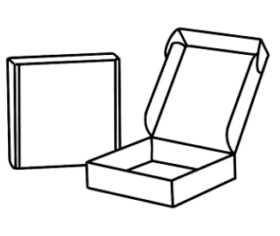 Bául
Bául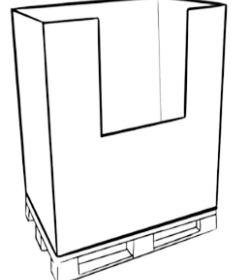 Box-pallet
Box-pallet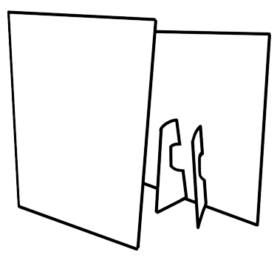 Displays
Displays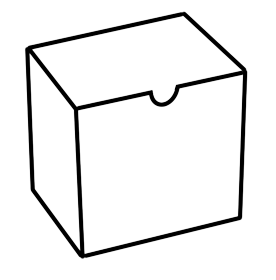 Estuchería
Estuchería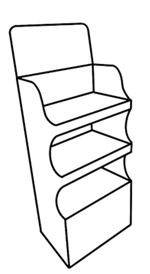 Expositor
Expositor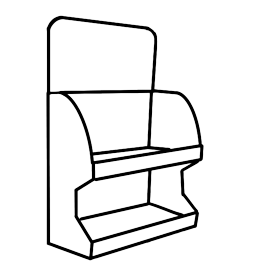 Exp.sobremesa
Exp.sobremesa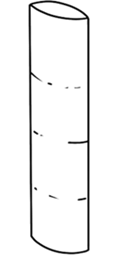 Tótem
Tótem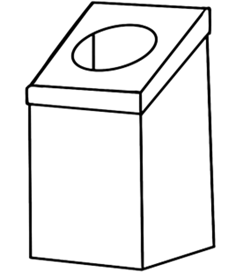 Otros
Otros
